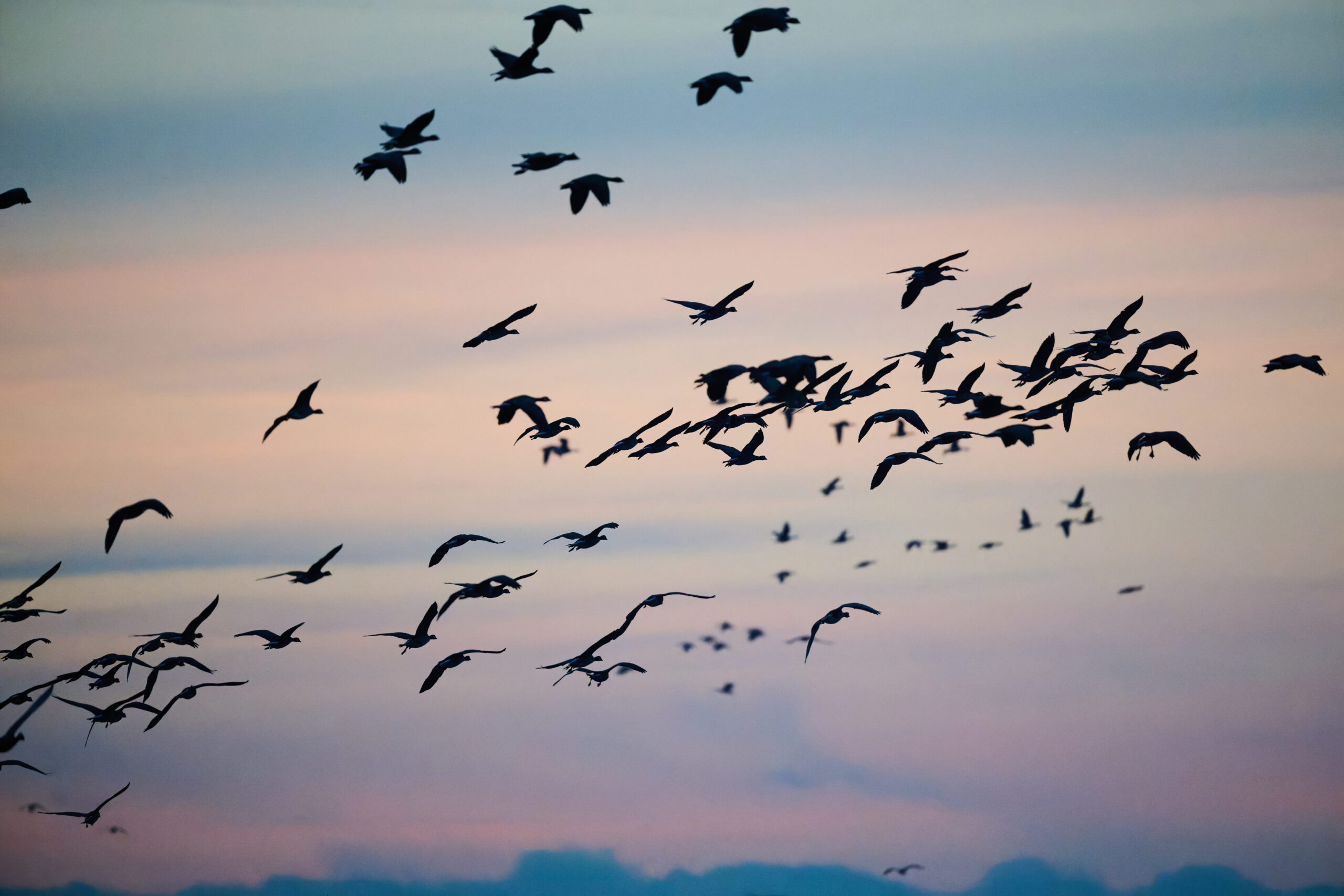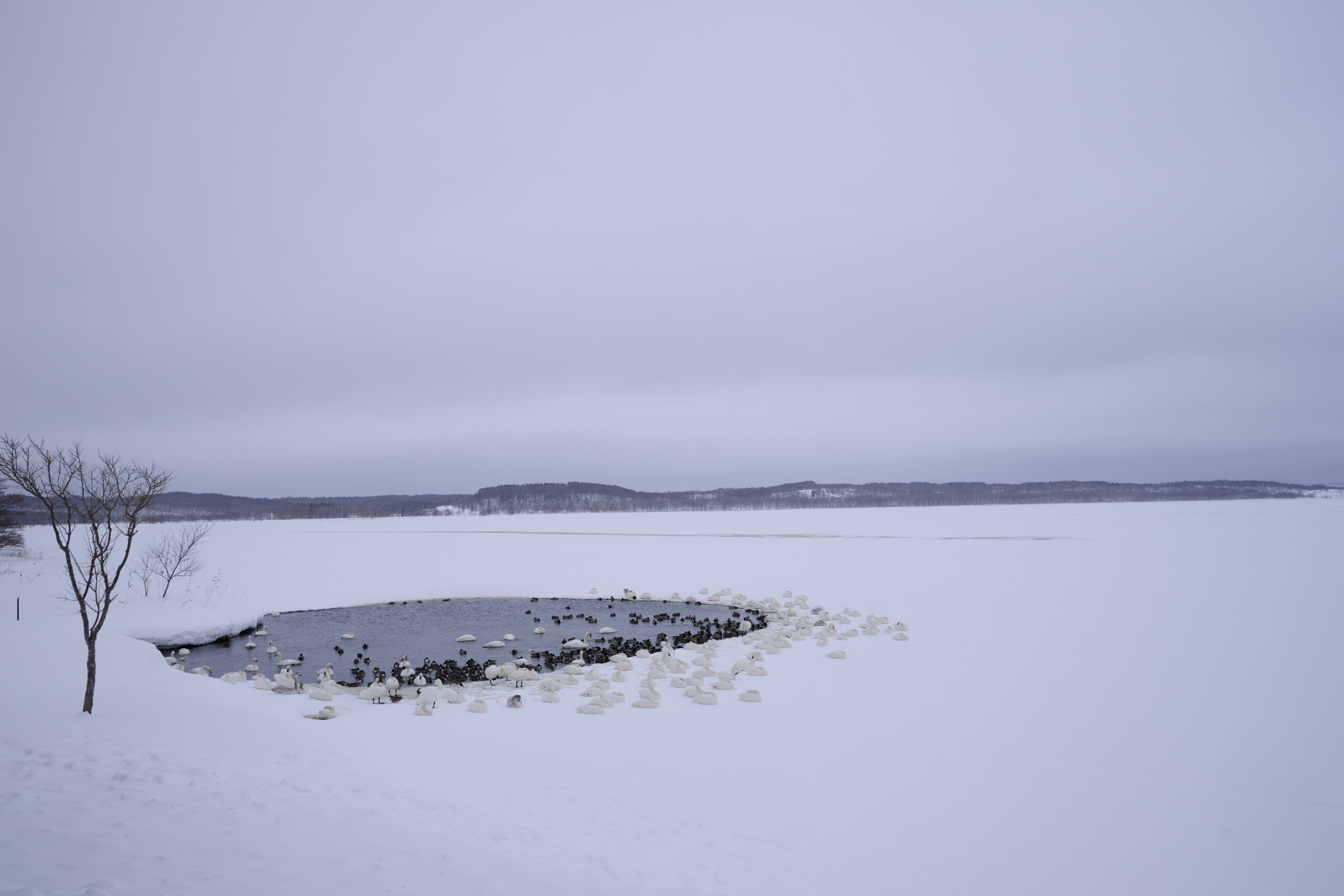2005年にラムサール条約に登録された沼で、近くの伊豆沼と並び日本有数のマガンの飛来地として有名。伊豆沼と比べ観光用の整備は気持ち程度に抑えられており沼の面積も小さめだが、その分伊豆沼とは異なり混雑もなく比較的近くでマガンを観察することができる。特に11月ごろのマガンの数は尋常ではなく、明け方の飛び立ちやねぐら入りはマガンによるレイブパーティーと呼ぶのに相応しい。一度その大饗宴の中に身を置いてしまうと、私の生活上の悩みなど掻き出された耳くその如き些事であることを思い知らされる。
ガン・カモ類(マガン、マガモ、オナガガモ、オオハクチョウなど)
基本的に車で行くことになる。駐車場として用意されている場所は3箇所。
- 蕪栗沼をGoogle Mapで見た際に、沼として表示がある場所の東側は「白鳥地区」との記載になっていて沼の表示はないが、ここにも沼がありマガンやハクチョウの飛来数は多い。実際に行ってみたときは蕪栗沼にはマガンはほとんど確認できず(ねぐらいり前)、かなりの数がこの「白鳥地区」にいた。
- 上の地図のShoot Point 1はそんな「白鳥地区」のマガンを明け方の飛び立ちで観察する場所、Point2はねぐら入りを観察する場所として記載している。
- Shoot Point 1, 2 どちらに行くにも、南側駐車場が近い。近いといっても結構歩く。
- 伊豆沼より近いといっても、沼にいるものを撮影するには600mmでも足りない(場所による)。飛来しているものの撮影は逆に200mm-400mm程度の方が撮影に向いている。
- 明け方の飛び立ちは夜明け30分前〜30分後、ねぐら入りは日没30分前〜30分後に確認できる。この時間には割とばらつきがあり、私が訪れたときは飛び立ちは夜明け30分後、ねぐら入りは日没30分後にピークを迎えていた。
- マガンは10月下旬〜2月上旬に観察できるとのことだが、11月が最も観察向きの時期だとのこと。実際1月と11月での比較だと、1月は非常に寒く雪もちらつく一方で11月よりも数が少なかった。11月は1月とは比較にならない数のマガンを確認できた。


